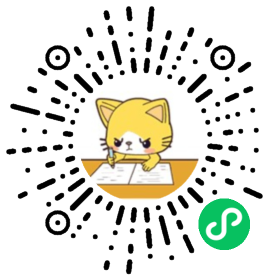【单选题】
城市轨道交通工程项目符合上述前提条件,开展初期运营前安全评估的,由城市轨道交通建设单位会同运营单位提交()、消防验收、人防验收、卫生评价、档案验收等专项验收文件,工程质量验收监督意见,以及建设单位编制的环保验收报告。___
A. 单一设备验收
B. 运营环境验收
C. 规划验收
D. 特种设备验收
查看试卷,进入试卷练习

微信扫一扫,开始刷题

答案
D
解析
暂无解析
相关试题
【单选题】
第三方安全评估机构不得与被评估单位存在控股关系、管理关系等情形的关联关系。所在单位是评估项目的()、勘察、设计、施工、监理、监测、检测单位或者设备供应商不得遴选。___
A. 建设
B. 民营企业
C. 国有企业
D. 有资质的评估机构
【单选题】
通过初期运营前安全评估并且发现的问题整改到位后,城市轨道交通运营主管部门依法向城市人民政府报告评估情况并申请办理初期运营手续,运营单位与建设单位签订运营接管协议,正式接管()、设备使用权、属地管理权,并向社会公告开通时间和运营安排。___
A. 安全责任权
B. 线路调度指挥权
C. 行车组织权
D. 检修维护权
【单选题】
试运行前应完成系统联调。试运行时间不少于3个 月,其中按照开通运营时列车运行图连续组织行车20日以上且关 键指标(计算方法见附则)符合以下规定如列车运行图兑现率不低于 ;___
A. 98.5%
B. 99.5%
C. 97%
D. 98%
【单选题】
试运行前应完成系统联调。试运行时间不少于3个 月,其中按照开通运营时列车运行图连续组织行车20日以上且关 键指标(计算方法见附则)符合以下规定如列车正点率不低于 ;___
A. 98.5%
B. 99.5%
C. 97%
D. 98%
【单选题】
试运行前应完成系统联调。试运行时间不少于3个 月,其中按照开通运营时列车运行图连续组织行车20日以上且关 键指标(计算方法见附则)符合以下规定如列车服务可靠度不低于 万列公里/次___
A. 20
B. 2.5
C. 3
D. 4
【单选题】
试运行前应完成系统联调。试运行时间不少于3个 月,其中按照开通运营时列车运行图连续组织行车20日以上且关 键指标(计算方法见附则)符合以下规定如列车退出正线运行故障率不高于 次/万列公里___
A. 0.9
B. 0.5
C. 1
D. 2
【单选题】
试运行前应完成系统联调。试运行时间不少于3个 月,其中按照开通运营时列车运行图连续组织行车20日以上且关 键指标(计算方法见附则)符合以下规定如车辆系统故障率不高于 次/万列公里___
A. 5
B. 6
C. 7
D. 8
【单选题】
试运行前应完成系统联调。试运行时间不少于3个 月,其中按照开通运营时列车运行图连续组织行车20日以上且关 键指标(计算方法见附则)符合以下规定如信号系统故障率不高于 次/万列公里___
A. 1
B. 2
C. 3
D. 4
【单选题】
试运行前应完成系统联调。试运行时间不少于3个 月,其中按照开通运营时列车运行图连续组织行车20日以上且关 键指标(计算方法见附则)符合以下规定如供电系统故障率不高于 次/万列公里___
A. 0.1
B. 0.2
C. 0.3
D. 0.4
【单选题】
试运行前应完成系统联调。试运行时间不少于3个 月,其中按照开通运营时列车运行图连续组织行车20日以上且关 键指标(计算方法见附则)符合以下规定如 站台门故障率不高于 次/万次___
A. 1
B. 3
C. 2
D. 4
【单选题】
车站每个站厅公共区至少有 个独立、直通地面 的出入口具备使用条件;地下一层侧式站台车站的每侧站台应有 不少于 个直通地面的出入口具备使用条件;共用站厅公共区的 换乘车站,站厅公共区具备使用条件的出入口每条线至少有 个。___
A. 2.2.2
B. 3.2.3
C. 2.3.2
D. 3.3.3
【单选题】
车站投入使用的出入口应与市政道路连通,当出 入口朝向城市主干道时,应具有客流集散场地;当出入口台阶或 坡道末端与临近的道路车行道距离小于 时,应采取护栏或其 他安全防护措施;影响车站客流集散的站外广场应与车站同步 具备使用条件。___
A. 3M
B. 4M
C. 5M
D. 6M
【单选题】
当高架区间上跨道路净空高度不大于 时,应具有限高标志和限界防护架;位于道路一侧或交叉口的墩柱 有可能受外界撞击时,墩柱应具有防撞击的保护设施。___
A. 3.5M
B. 4.5M
C. 5.5M
D. 6.5M
【单选题】
运营单位主要负责人和安全生产管理人员应按 规定接受安全培训,初次安全培训时间不少于 学时。列车驾驶 员、行车调度员、行车值班员、信号工、通信工等重点岗位人员应通 过安全背景审查,列车驾驶员还应通过心理测试。___
A. 32
B. 33
C. 35
D. 25
【单选题】
在经验丰富的列车驾驶员指导和监督下驾驶,驾驶里程 不少于,其中在本线上的里程不少于1000km。___
A. 5000km
B. 4000km
C. 3000km
D. 2000km
【单选题】
26.应具有大客流车站(含各种交路折返车站和 停车功能的车站)站台至站厅或其他安全区域的疏散楼梯、用作疏 散的自动扶梯和疏散通道的通过能力模拟测试报告,核验超高峰 小时一列进站列车所载乘客及站台上的候车人员能在 min内全 部疏散至站厅公共区或其他安全区域、公共区乘客人流密度等参 数是否符合乘客疏散和安全运营要求。___
A. 2
B. 3
C. 4
D. 6
【单选题】
直线站台的站台门,其滑动门门体与车体最宽处的间隙,当车辆采 用塞拉门时,不大于 ,当釆用内藏门或外挂门时,不大于100mm;___
A. 120mm
B. 140mm
C. 160mm
D. 130mm
【单选题】
直线车站站台边缘(或防踏空胶条边缘)与车厢地板面高度处车辆 轮廓线的水平间隙不应大于 ;曲线车站站台边缘(或防踏空胶条 边缘)与车厢地板面高度处车辆轮廓线的水平间隙不应大于180mm。___
A. 120mm
B. 140mm
C. 160mm
D. 100mm
【单选题】
车体垂向、横向加速度传感器安装在转向架中心位置正上方距其 左侧或右侧 位置的车体地板面上,采集车体垂向、横向加速度 数据,测试并计算车辆运行平稳性指标(计算方法见附则);___
A. 1200mm
B. 1400mm
C. 1600mm
D. 1000mm
【单选题】
障碍物探测测试。选择车站一侧站台门,操作站台门端头控制盘, 打开和关闭整侧滑动门 ,确认滑动门能正常打开和关闭;选择其中一 档滑动门,操作门头就地控制盒打开滑动门后,将40mmX40mmX5mm 的标准试块分别放在上、中、下等离地高度来阻挡滑动门,操作门头上的 就地控制盒关闭该滑动门,记录滑动门报警和动作情况;___
A. 1次
B. 3次
C. 2次
D. 4次
推荐试题
【单选题】
《宪法》规定:在宪法中增设国家机构监察委员会是在_______。
A. 1988年宪法修正案
B. 1994年宪法修正案
C. 1999年宪法修正案
D. 2018年宪法修正案
【单选题】
《宪法》规定:监察机关办理职务违法和职务犯罪案件,应当与审判机关、检察机关、执法部门____。___
A. 互相配合、互相制约
B. 互相配合
C. 互相制约、互相监督
D. 互相制衡
【单选题】
《宪法》规定:中华人民共和国主席、副主席每届任期同____每届任期相同。___
A. 全国人民代表大会
B. 中央军委主席
C. 全国人民代表大会常务委员会
D. 国务院总理、副总理
【单选题】
2018年宪法修正案,宪法第六十二条“全民人民代表大会行使下列职权”中增加________
A. 选举最高人民法院院长
B. 选举国家监察委员会主任
C. 选举中央军事委员会主席
D. 选举最高人民检察院检察长
【单选题】
《宪法》规定:国家倡导____,提倡爱祖国、爱人民、爱劳动、爱科学、爱社会主义的公德。___
A. 核心价值观
B. 爱国主义教育
C. 社会主义核心价值观
D. 共产主义教育
【单选题】
《宪法》规定:将“构建人类命运共同体”写入我国宪法的是____。___
A. 1993年宪法修正案
B. 1999年宪法修正案
C. 2004年宪法修正案
D. 2018年宪法修正案
【单选题】
《宪法》规定:父母有抚养教育未成年子女的义务,____。 ___
A. 子女有赡养扶助父母的义务
B. 成年子女有赡养扶助年老父母的义务
C. 子女有赡养扶助丧失劳动能力的父母的义务
D. 成年子女有赡养扶助父母的义务
【单选题】
《宪法》规定:全国人大_____统一审议向全国人大及其常委会提出的法律案。___
A. 宪法和法律委员会
B. 内务司法委员会
C. 教育科学文化卫生委员会
D. 外事委员会
【单选题】
宪法是国家的根本法,是治国安邦的总章程。1982 年宪法公布施行后,全国人大分别于____先后四次对宪法的个别条款和部分内容作出修正。 ___
A. 1988年、1993 年、1999 年、2004 年
B. 1983年、1993 年、1999 年、2009 年
C. 1988年、1993 年、1996 年、2009 年
D. 1983年、1996 年、1999 年、2004 年
【单选题】
《宪法》规定:国家为了公共利益的需要,可以依照法律规定对公民的私有财产实行……。___
A. 无偿征收或者征用
B. 征收或者征用并给予赔偿
C. 有偿征收或者征用
D. 征收或者征用并给予补偿
【单选题】
《宪法》规定:中华人民共和国年满……的公民,不分民族、种族、性别、职业、家庭出身、宗教信仰、教育程度、财产状况、居住期限,都有选举权和被选举权;但是依照法律被剥夺政治权利的人除外。___
A. 十八周岁
B. 十六周岁
C. 二十周岁
D. 十四周岁
【单选题】
宪法第三条第三款“国家行政机关、审判机关、检察机关都由人民代表大会产生,对它负责,受它监督。”修改为:“国家行政机关、____、审判机关、检察机关都由人民代表大会产生,对它负责,受它监督。”___
A. 公安机关
B. 监察机关
C. 监查机关
D. 纪检部门

